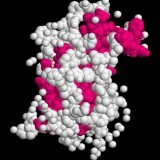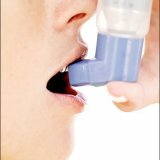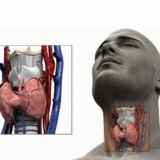First aid for hypoglycemia or ketoacidosis

Hypoglycemia is an attack of brain fasting that occurs when the blood glucose level in a patient with diabetes of the first and second type decreases. Therefore, hypoglycemia is not a separate disease, as some believe, and can only occur in diabetic patients. Usually, an attack occurs before the patient's brain is about to fail. Because glucose plays a crucial role in the functioning of neural connections of the brain, and promotes redox processes in cells - its decrease in blood leads to brain starvation. However, despite the generally accepted low sugar threshold for a diabetic of 3.3 mmol per liter, it can occur even with a spontaneous decrease in sugar and lead to death.
Many experts note that the threshold value after such a reduction can remain high, for example 11 mmol / l. Therefore, we can conclude that hypoglycemia occurs precisely because of a sharp decrease in blood sugar, while with a smooth person feels normal. Even at low rates. With age, malaise can cause a slight drop in sugar, since its value in the body - increases.
As a rule, after an attack, it remains from one to five minutes to take measures to normalize the condition.
Ketoacidosis - as well as hypoglycemia, refers to the rapidly developing complications of diabetes. When there is a shortage of energy, obtained by splitting glucose, the body begins to receive it during the breakdown of fats. This reaction leads to the fact that the acidity of the blood increases dramatically, but at the same time the brain does not receive the substances necessary for it to function properly, and it malfunctions.
Symptoms of ketoacidosis and hypoglycemia.
The dangerous signs of hypoglycemia and ketoacidosis include:
- a sharp increase in heart rate;
- nausea and vomiting;
- weakness and spontaneous drowsiness;
- weak sensitivity of individual parts of the body;
- breathing of Kussmaul.
Because of the typical starvation of the brain, the patient falls into a cramped state, and is unable to adequately think and act. That is why it is especially important that the first signs are not left without attention.
Possible consequences for hypoglycemia or ketoacidosis are organic brain damage and, in this connection, the onset of a diabetic coma, which can lead to the death of the patient.
Based on this, it is required to know what can cause the development of the disease.
The main causes of hypoglycemia include: missed meals, large intervals between meals, unusually high physical activity, alcohol consumption, excess of the permitted dose of drugs, and lack of rest. The main reasons for ketoacidosis include a large interval in the intake of insulin and an acutely developing infection.
If these symptoms occur, you should immediately give help. The first help in hypoglycemia or ketoacidosis is to clean the mouth of the patient from food, put a piece of sugar( you can have something sweet or glucose tablets) and call an ambulance. However, if the attack occurs in one of the possible phases, additional knowledge is required to assist.
This is what they can be:
- when you have a light hunger, you need to use a glucometer to determine the level of sugar. If it approaches 5 mmol / l, you need to eat two pieces of sugar, drink sweet juice and use carbohydrates that are slowly absorbed( for example: black bread, a bowl of cereal).
- with a clear sense of hunger requires urgent measures: eat sugar, fruit, bread, drink milk. Otherwise, sweating, headache, drowsiness, pallor, and chills may occur.
- with "double vision" in the eyes, there is numbness of individual parts of the body, aggression is manifested, it is necessary to force the patient to quickly drink any beverage containing sugar. Ideally, make the patient swallow the drink.
- with a loss of consciousness or coma - the first help: cleanse the mouth of food, put sugar, call an ambulance. Intramuscular administration of glucagon is possible.
In order to provide more effective help with hypoglycemia and ketoacidosis, it is recommended to eat more foods containing "light" sugar. It can be honey, sweet tea, raisins, grapes, juice. With their timely acceptance, the symptoms take place within five to ten minutes. To reduce and stop the decrease in glucose, it is recommended to observe the peculiarities of eating food for hypoglycemia to eat: black bread, biscuits, apples. By the withdrawal of symptoms, it is necessary for some time to adhere to a special diet for hypoglycemia or ketoacidosis. For example, eat cabbage, which is able to contain the sudden rapid rise of sugar.
In order to help with ketoacidosis, you can also use rehydration( administration of saline solution for inflammation of intercellular and vascular fluids), insulin( intramuscularly or intravenously), potassium( injected immediately, and also taken for several more days to continue treatment),Alkali( in case of manifestation of pronounced acidosis).You can also use other methods of providing help: simultaneous treatment for hypoxia, infection, hypothermia;Gastric lavage in the comatose state of the patient. However, preliminary consultation with a doctor is mandatory. Of course, the most important thing that you need to understand is always a clear coordination of your actions, careful analysis of your own condition and timely acceptance of specific actions. And then your experience will help you avoid mistakes, can prevent the development of complications, which means that you will always have good health and working capacity.
The acquired knowledge should become your experience, and only then - they can really support you.



